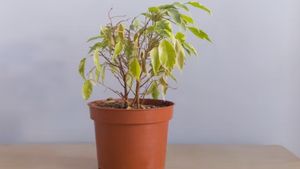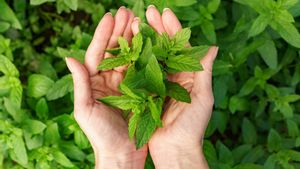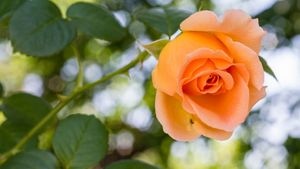JAKARTA - Did you know that plants speak their own language? Although not like humans, colors, positions, and leaf textures contain specific messages to be conveyed. And as a plant owner, learning to respond to these messages can help you save ornamental plants.
With a little help to break the code of this behavior and a simple adjustment, your foliated pal will return to normal in no time. There are three main reasons for water droplets on plant leaves. Therefore, plant lovers need to study them to identify those that might cause plant droplets, as quoted from Reader's Digest, Monday, July 24 below:
This luxury term is used to describe the process of exchanging natural water from plants. Plants suck water from the roots, and when they receive as much as needed, the plant will release excess water through the leaves. Consider it a sweat version of the plant.
Dew can cause water droplets in ornamental plant leaves in the same way as causing droplets in your yard. When there is a difference in temperature between plants and the surrounding air, atmospheric moisture will condense on warmer surfaces, namely plant leaves.
SEE ALSO:
Gutasi is a process in which plants release water, nutrients, and minerals in the form of xylem sap. This getah is often misinterpreted as ordinary water and most commonly occurs in certain plant varieties, such as succulents and fruit and vegetable plants.
Can these droplets cause problems for plants? The answer is not all problematic. The droplets of dew and transfusion in small amounts will certainly not harm your plant. However, if you look at more than one or two drops falling from the tip of the plant leaves, this possibility is a sign of excessive watering, which means a plant watering strategy needs to be improved.
To make sure that you have problems with excess watering, then try checking other signs like;
If any of these symptoms are related to the condition of your plant, then it is time to re-evaluate your watering schedule.
Then, how do you fix the excess water in ornamental plants? In most cases, the solution is to stop watering until the soil is completely dry, usually for a few weeks. To make sure the soil is completely dry, dig the soil as deep as possible or use a wood chip or a moisture gauge.
Make sure to check some places in the pot to get a holistic picture. However, if your plant shows all the signs outlined above, it's best to do repoting, pruning rotten roots that look black and soft.
The English, Chinese, Japanese, Arabic, and French versions are automatically generated by the AI. So there may still be inaccuracies in translating, please always see Indonesian as our main language. (system supported by DigitalSiber.id)













